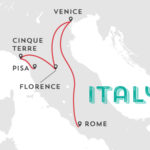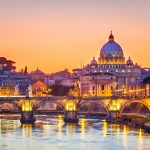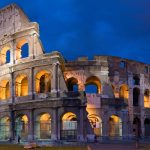Interesting Facts About Italian People: Arts, Controversies Of The Middle Ages
Italy happens to be one of the most interesting places to live or visit. This small country has some of the best arts and architectures that only a few countries in the world can boast of. It also has been able to conserve buildings, art pieces and traditions which span centuries. However, controversy has also been a common feature in Italian history.
Many rulers, artists and at times priests have been embroiled in controversies that only history can narrate so well.
Through my vast travel across this region, I’ve been able to compile some of the most interesting facts, arts and controversies that you can only find here.
Italy’s Pasta Tradition

“Women in Italy are the ones who prepare pasta.”
You can’t finish a sentence with Italian cuisines without having pasta as part of it. Did you know that dried pasta was brought to Italy in the 13th century by Arabs? (However, fresh pasta existed long before then). Also, pasta was original eaten with the hands and the arms held high with the head tilted backwards. Women in Italy are the ones who prepare pasta and it’s not a shocker considering that there are over 500 ways of cooking it.
Most Famous Authors
Dante Alighieri, Francesco Petrarch and Giovanni Boccaccio are the most famous authors cum poets in the whole of Italy. Dante’s work has even gone a step further to gain acclaims from around the world. He is also considered the father of Italian language.

“Compass was known in Italy as early as the 12th century.”
The Compass
Did you know that the compass was known in Italy as early as the 12th century? However, it started to be used widely during the 14th century and it was one of the reasons as to how mercantile traders discovered new routes. The compass allowed them to visit places that no one dared to go to for the fear of the unknown.
The Florence Cathedral – Duomo
How many buildings get to be completed within 1 century? Well, the Duomo in Florence is one such example. This building took approximately 140 years in order for it to be completed. The main reason for this was because the architects who started the project off didn’t have a single clue as to how they would build and hold the large dome.
Bread Without Salt?
Bread in the Tuscan region is made without salt. This tradition started off in the 12th century when the Florentines had a rivalry with the Pisans. It’s alleged that the Pisans blocked salt shipments in the high seas from reaching shore with the hope that the Florentines would surrender. Instead, the Florentines simply adjusted and started making bread without salt.
Rome’s Population
During the 1st century, Rome had approximately 1.5 million people. However, by the end of the 15th century the population went down to a mere 17,000 people. This meant that the city had lost almost 99% of its original population. It was however revived by renaissance popes as one of Europe’s greatest cities.
Black Death

“Italy was also ravaged by the bubonic plague during the fourteenth century.”
Just like other countries in Europe, Italy was also ravaged by the bubonic plague during the fourteenth century. This plague was brought by the merchants who had come from the Middle East. However, Italy managed to get back on its feet and the renaissance period was more charged than ever.
Shroud Of Turin
This is an ancient piece of linen which has had many controversies over the years. It can be found in Turin’s San Giovanni Cathedral. It’s believed to bear a faint imprint of a male, with some believing that it might have belonged to Jesus Christ. However, scientists determined that the shroud was made no earlier than the 1200s thereby disapproving such claims. However, it still remains a mystery as to whom it belonged to.
University Of Rome
The University of Rome was started in A.D. 1303 by the Catholic Church and happens to be one of the oldest universities in the world. During the middle ages it was named La Sapienza which means knowledge.
Chess
No, the Italians didn’t invent chess; however, in 1454, a real life chess game was played in Marostica. The main aim of the game was to get the hand of a beautiful girl. Since then, there have been many events held during each even numbered year where the town’s main piazza becomes a real life chess board.




 Hi there! I’m a social guy from Britain who likes three main things; art, history and travel. In June 2010 I decided to follow my passions and my first destination was France. In December of the same year I managed to travel to Italy and for some reason I never got enough of it.
Hi there! I’m a social guy from Britain who likes three main things; art, history and travel. In June 2010 I decided to follow my passions and my first destination was France. In December of the same year I managed to travel to Italy and for some reason I never got enough of it.


